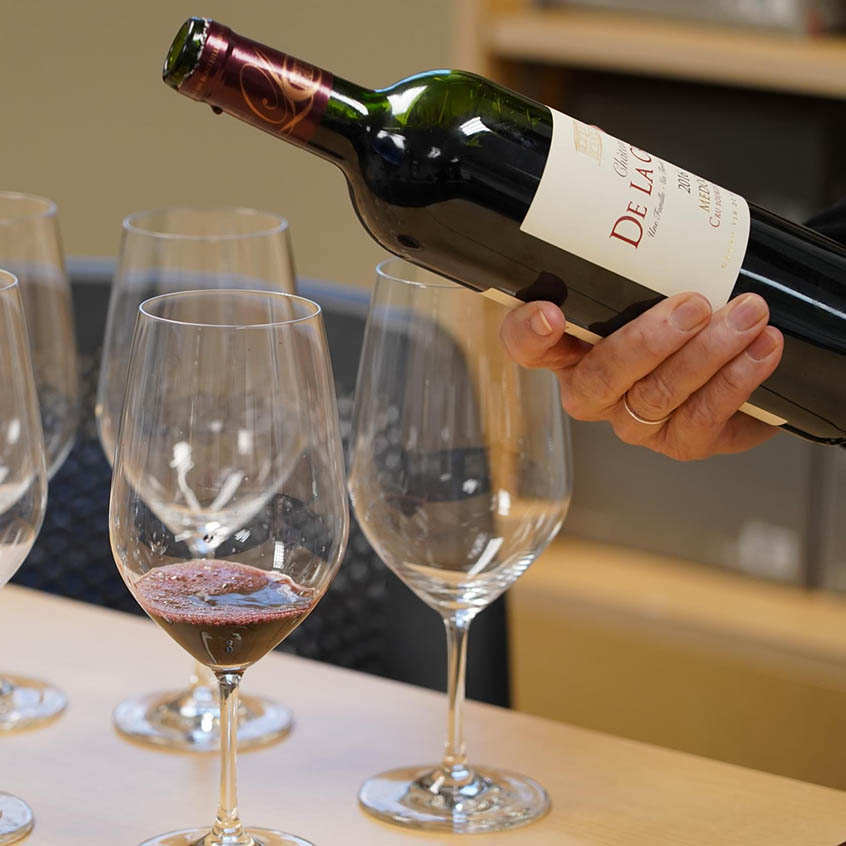
Italy produces wine from hundreds of different grape varieties, making its wine varied and engaging, yet perhaps a bit hard to grasp. This tasting concentrates on the wines from Toscana, Italy's third-largest quality wine-producing region. Although many of the wines are Sangiovese-based, the distinctive terroirs and other cultivated varieties offer a diverse tasting opportunity, ranging from some tasty whites to Old World and even international-style reds, topping off with traditional sweet. ICE's resident sommelier, Richard Vayda, will also discuss Tuscan wine history and Italian wine labeling. Regional cheeses will accompany the eight or more wines featured in the tasting.

You will work in teams to execute the class menu. At the end of class, participants gather to enjoy the food they have prepared. Wine is served with meals in most classes. All class menus are subject to change. While a snack platter is offered in both morning and evening classes, you may want to consider a light snack before joining us for class. Students are encouraged to bring a light lunch or dinner to all pastry classes.

You will work in teams to execute the class menu. At the end of class, participants gather to enjoy the food they have prepared. Wine is served with meals in most classes. All class menus are subject to change. While a snack platter is offered in both morning and evening classes, you may want to consider a light snack before joining us for class. Students are encouraged to bring a light lunch or dinner to all pastry classes.
Once you master essential cooking techniques, you possess the culinary grounding to cook both classical cuisines and the latest cooking styles. These full-participation classes teach fundamental skills, not just recipes. Most important, you'll gain the experience you need to cook with confidence and pleasure---without relying strictly on recipes. Each class culminates with a student-prepared meal. The course consists of four 6-hour classes. Fine Cooking 1 is a prerequisite to Fine Cooking 2. The course completes in four days.
Discover the vibrant flavors of the Philippines in "Essentials of Filipino Cooking." This hands-on class teaches you to prepare iconic Filipino dishes cherished in homes across the archipelago. Master Chicken Adobo, with its savory-sour tang, and learn to make perfect Pancit noodles. You'll also prepare rich, vegetable-forward Pinakbet with Pork; creamy, coconut-infused Ginataang Kalabasa at Sitaw; and savory, citrusy Bistek Tagalog, all served with fluffy white rice. Gain essential skills and authentic ingredient insights – then bring the warmth and complexity of Filipino cuisine home to your kitchen.
Take a page from one of the world's most romantic countries (and cuisines) as you and your partner produce flavor-packed French favorites and gain new culinary knowledge. We'll make a complete meal that highlights the best ingredients and preparations France has to offer, including: tuna niçoise tartine; butter lettuce salad with radish and avocado in a creamy lemon-dijon dressing; coq au vin and pommes aligot.
Ayurveda is the world's oldest form of natural healing and health. Its basic premise is that there exists an innate intelligence in our body and mind to be balanced and healthy. Ayurveda offers a knowledge of life with down-to-earth practices to keep this intelligence alive and well during our lifetime. In this two-day weekend workshop with culinary training, we will learn the fundamental principles of Ayurveda. You will learn about the doshas, the mahabhutas, prakriti - body type, the elements, what is health - balance and imbalance. We will learn the simple practices of Ayurveda to maintain health and live in rhythm with natural laws. We will learn about the six tastes of Ayurveda. We will learn how to correct imbalances in our digestion. On both days, we will be in the kitchen preparing food that balances us. We will create two complete meals, including Roasted Kabocha Squash Soup with Cranberries, Cilantro-Stuffed Paratha, Savory Autumn Vegetable-Paneer Tart, Braised Red Cabbage, Poha (steamed dry rice) with Curry Leaves, Rice Pudding, Orange-Fig Compote in Cardamom Syrup
Ranked as America’s Best Culinary School (USAToday 2019), our roster of Chef-Instructors have run top kitchens around the globe.
| (Separate multiple addresses with commas like: john@aol.com, jane@aol.com) | |